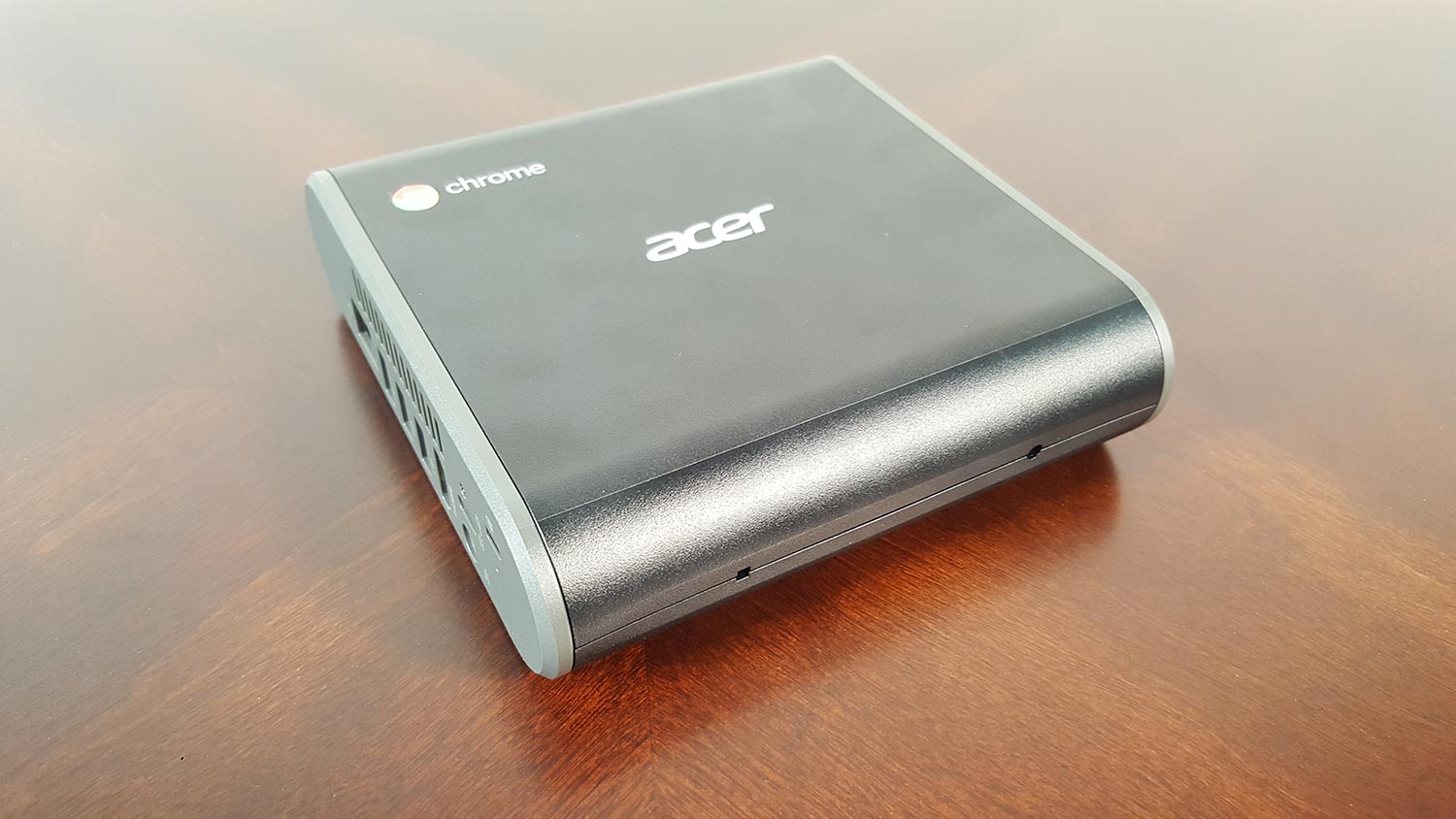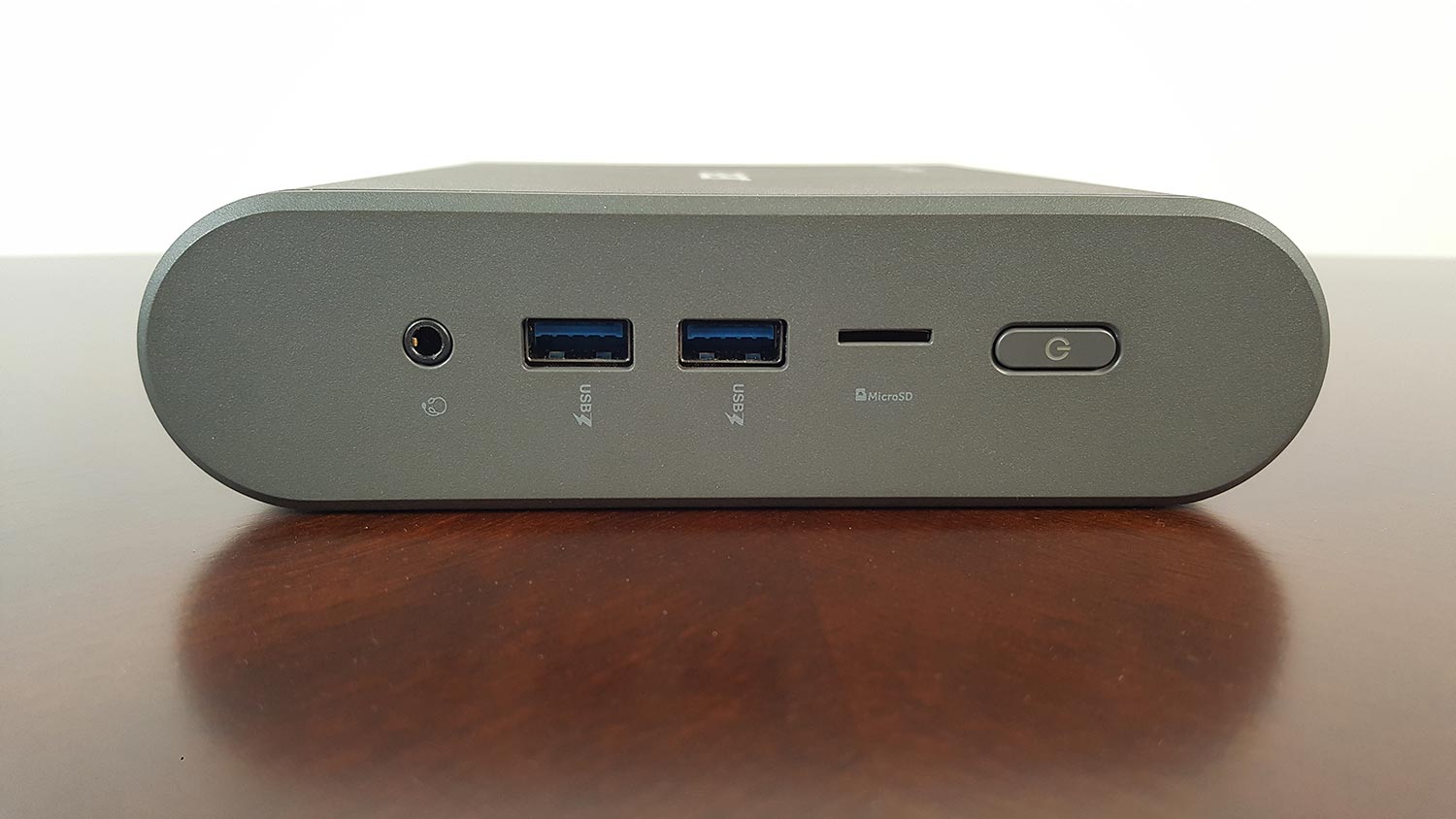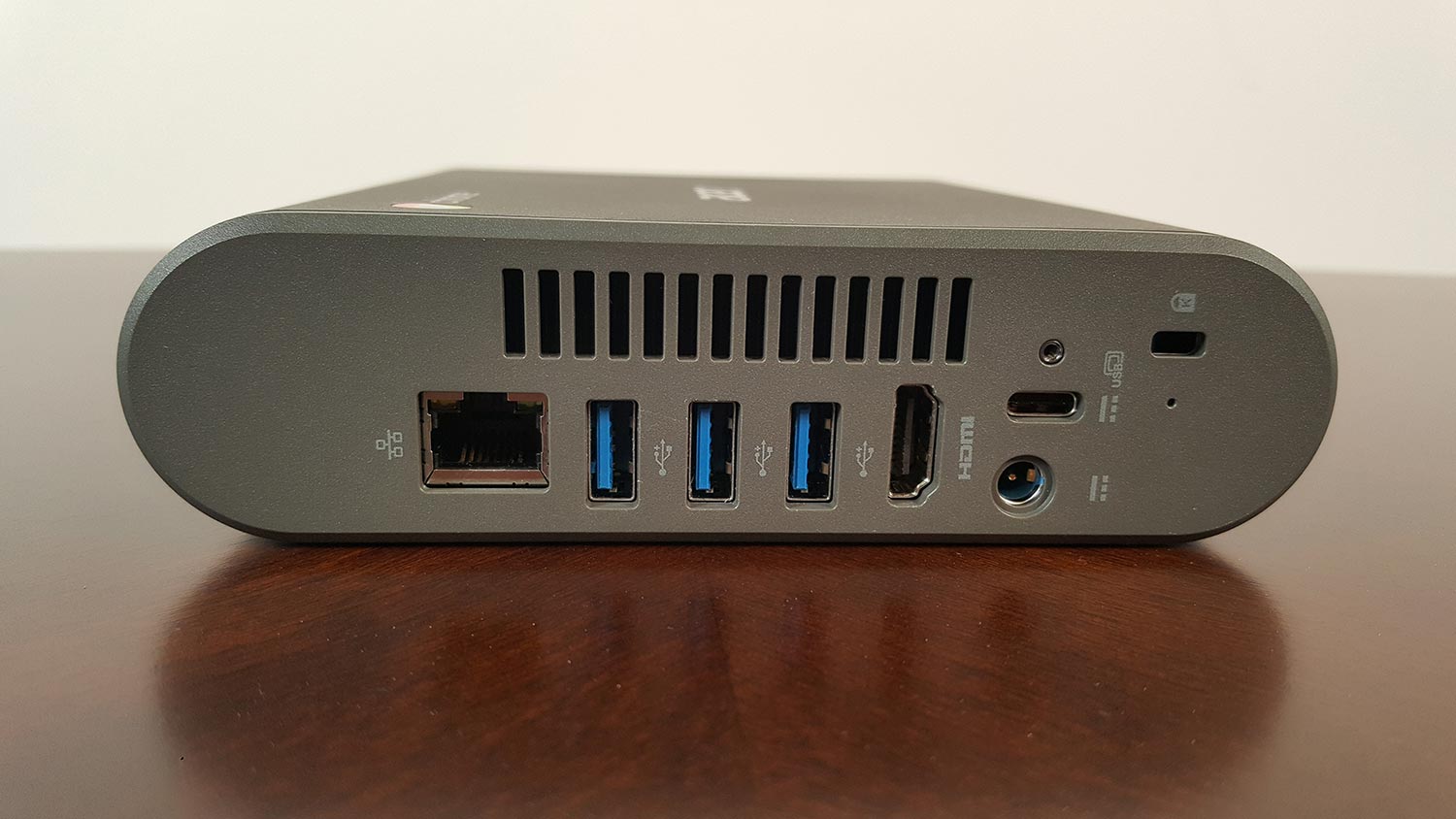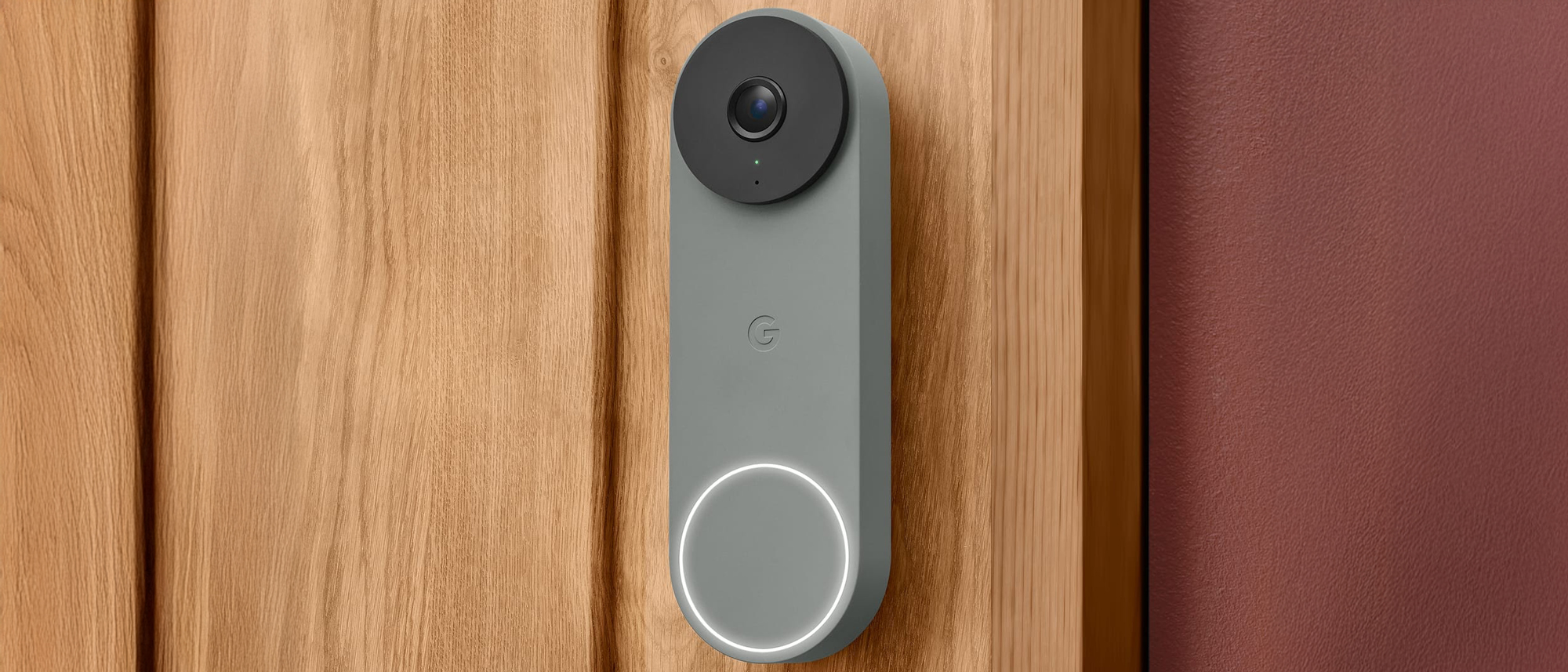Tom's Guide Verdict
The Acer Chromebox CXI3 is an excellent mini PC that runs Google's Chrome operating system. But even with a solid design and great performance, it's a lot to pay for a limited desktop experience.
Pros
- +
Compact design can be mounted or stashed out of sight
- +
Includes plenty of ports
- +
Has excellent performance
- +
Runs cool
Cons
- -
Limitations of Chrome OS
- -
High price
Why you can trust Tom's Guide
Acer has been a player in the Chrome OS space since the early days of the Chromebook, routinely making some of the best Chrome laptops around. Now, with the Acer CXI3 (starting at $249; $519 as tested), the company is showing that it can deliver that same sort of market-leading capability in a mini desktop. Made for educational and professional use, the little Chromebox is the best mini PC with Chrome-OS available, but that distinction comes with a higher price tag than you might expect for a category originally defined by astoundingly low prices.
Editor's Note: (March 26, 2021) We periodically update our reviews to make sure that pricing and information is up to date. Our rating and recommendation for the Acer Chromebox CXI3 review remains unchanged from when it originally published in August of 2018.
How much does the Chromebox CXI3 cost?
The unit we reviewed is one of the better configurations in the CXI3 line, the CXI3-I58GKM. This $519 model is equipped with an Intel Core i5-8250U CPU, 8GB of RAM and a 64GB SSD. You can upgrade the RAM to 16GB after purchase, but I didn't see much in my testing that would necessitate that for the average user.

There are three other configurations available, differing by processor, memory and storage. At the low end is the CXI3-4GKM, which sells for $249 and offers a dual-core Intel Celeron 3865U processor, 4GB of RAM and a 32GB SSD. Next up is the $459 CXI3-I38GKM, which has an Intel Core i3-7130 CPU, and the same 8GB of memory and 64GB of storage offered on our review unit. At the top of the heap is the CXI3-I716GKM, which packs an Intel Core i7-8550U processor, along with 16GB of RAM and a 64GB SSD. It sells for $759. Whichever configuration you're interested in buying, it's worth taking a look at our Acer promo codes, as we may be able to save you a fair few dollars on your order.
Acer Chromebox CXI3: Design
The CXI3 is compact and light, measuring just 5.9 x 5.9 x 1.6 inches and weighing 1.2 pounds. Unlike the Asus Chromebox and other past Chromeboxes that were boxy little units, the CXI3 has curved sides, giving the chassis an oval shape when viewed from the front.

The chassis is mostly black plastic, with dark-gray faceplates on the front and back. The box can be used on its own, set in a vertical orientation with an included stand, or mounted on the back of a monitor using an included mount.
Acer Chromebox CXI3: Ports
On the front of the small chassis are two USB 3.0 ports, a microSD card slot and a headphone jack, alongside a power button.
Get instant access to breaking news, the hottest reviews, great deals and helpful tips.

On the back of the Chromebox, there's a gigabit Ethernet port, three USB 3.0 ports, an HDMI output, a USB Type-C port and a Kensington lock slot.

For wireless connectivity, the CXI3 is outfitted with 802.11ac Wi-Fi and Bluetooth 4.2.
Acer Chromebox CXI3: Performance
Our Chromebox CXI3 came equipped with an Intel Core i5 processor, 8GB of RAM and a 64GB eMMC for local storage. Compared with most Chrome-based desktops and laptops, these are impressive specs and rather lavish memory allotments, given that Chrome is built to work on low-end hardware with minimal RAM and little need for local storage. But they result in speedy performance you can feel. In my tests, web browsing was snappy and responsive, and I was able to switch between 20 open browser tabs while streaming 4K video without a hiccup.

Real-world use was similarly smooth. I not only researched and wrote the bulk of this review on the CXI3 but also enjoyed a number of browser-based games — ranging from Doggonauts to Doom online — and streamed live programming from Pluto TV. At no point did my performance slow, nor was there any issue while multitasking across different apps and extensions.
Because Chromeboxes run on Google's Chrome OS, we can't run most of our test software on them, thus limiting the performance tests we can use. But in the online performance test JetStream, the CXI3 scored 168.22 points (higher is better). This is more than twice the score of the Asus Chromebox (75.6) and significantly better than both the Azulle Access Plus (45.8) and the Ockel Sirius B Black Cherry (38). The system that came the closest to matching this score was the Lenovo ThinkCentre M710q Tiny (158.25), which also boasts an Intel Core i5 processor.
To test graphics on Chrome OS products, we use WebGL Aquarium, a simulation that renders hundreds of fish floating on-screen. When rendering 1,000 fish at a time, the CXI3 maintained a strong 60 frames per second. When we dialed it up to 5,000 fish, the frame rate dropped to 49 fps, and for 10,000 fish, it went down to 28 fps. This is fairly impressive graphics performance that rivals that of traditional Windows PCs.
MORE: Best Acer Laptops
The Lenovo ThinkCentre M710q Tiny, for example, managed only 48 fps for 1,000 fish and 21 fps for 10,000 fish. The Asus Chromebox did even worse, with 30 fps for 1,000 fish and 19 fps for 10,000 fish. Portable stick PCs have the lowest graphics performance, as seen with the Ockel Sirius B Black Cherry, which stuttered at 1,000 fish (15 fps) and ground to a halt at 10,000 (3 fps).
Acer Chromebox CXI3: Heat
At first, the small size and potent hardware of the CXI3 left me worrying about heat management. Even less-powerful Chromeboxes have been known to heat up considerably from moderate workloads, but this didn't seem to be an issue for the CXI3. Even after we ran our benchmark tests and browsed several tabs' worth of online content, including streaming video, the Chromebox had an external temperature of just 84 degrees Fahrenheit. We consider anything above 95 degrees uncomfortable, though that's less of an issue for desktop computers.
Acer Chromebox CXI3: Software and warranty
The CXI3 uses the Google Chrome operating system, so there are some key differences from the usual Windows or macOS machine. Most significant, Chrome OS is optimized for online use, relying on cloud-based storage, online apps and extensions in the place of hard drives and locally installed software. If you're already online for most of what you do, it may not be much of an adjustment. But if you're a longtime user of Microsoft products, like Word, Excel and PowerPoint, the switch to Google's cloud-based equivalents — Docs, Sheets and Slides — may be a bit jarring. If you're wedded to Word and other Office products, you can get the official apps through the Google Play store; Chrome also supports Android apps.
MORE: Ports Guide
That said, most basic PC functionality is still on offer. The Google suite of office tools effectively replaces Microsoft Office, and similar replacements can be found for common programs like Adobe Photoshop, with similar functionality being offered through apps like Pixlr and Fotor. Often, there are online versions of these apps available from the same companies.
Acer covers the Chromebox CXI3 with a one-year warranty.
Acer Chromebox CXI3: Verdict
The Acer Chromebox CXI3 may be the best desktop version of Chrome OS available. While it's not hard to be a big fish in such a small pond (only a handful of Chromeboxes have ever come to market), the CXI3 still stands apart thanks to its solid performance, a decent port selection and a design that offers great heat management and flexible mounting options. The CXI3 is certainly better than the Asus Chromebox, but it also costs more than three times as much. It does manage to be less expensive than the Lenovo ThinkCentre M710q Tiny, but the overall value proposition shifts once Windows enters the picture.
Brian Westover is currently Lead Analyst, PCs and Hardware at PCMag. Until recently, however, he was Senior Editor at Tom's Guide, where he led the site's TV coverage for several years, reviewing scores of sets and writing about everything from 8K to HDR to HDMI 2.1. He also put his computing knowledge to good use by reviewing many PCs and Mac devices, and also led our router and home networking coverage. Prior to joining Tom's Guide, he wrote for TopTenReviews and PCMag.
-
wcoleman333 You compare performance scores to the Asus Chromebox but you don't identify which configuration was used. Like Acer, Asus has different configurations including Intel Celeron, Core I3, I5 and I7. Without identifying the Asus model number used for comparison, your statement is meaningless.Reply

